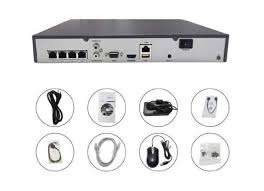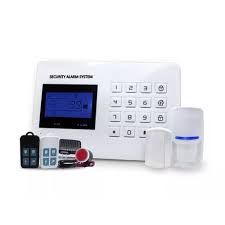In the realm of video surveillance systems, a 4-channel NVR (Network Video Recorder) plays a crucial role in ensuring efficient and effective monitoring of security cameras. This device serves as the central hub for recording and storing video footage captured by up to four cameras simultaneously, offering a compact and streamlined solution for small to medium-sized surveillance setups.
One of the key advantages of a 4-channel NVR is its ability to support multiple cameras, allowing users to monitor different areas or angles within a property or premises. This flexibility enables comprehensive surveillance coverage without the need for separate recording devices for each camera, simplifying the overall setup and management process.
Furthermore, 4-channel NVRs typically come equipped with advanced features such as remote viewing capabilities, motion detection, and scheduled recording options. These features enhance the functionality and usability of the system, enabling users to customize their surveillance settings according to their specific needs and preferences.
With the rise of IP (Internet Protocol) cameras in modern security systems, 4-channel NVRs have become increasingly popular due to their compatibility with digital camera technology. By connecting IP cameras to the NVR via a network connection, users can enjoy high-definition video quality and seamless integration with other digital devices and applications.
Overall, a 4-channel NVR offers a reliable and cost-effective solution for individuals and businesses looking to enhance their security infrastructure with modern surveillance technology. With its compact design, versatile functionality, and compatibility with IP cameras, this device serves as a valuable asset in maintaining a vigilant eye on your surroundings.
5 Essential Tips for Choosing a 4-Channel NVR System
- Ensure the NVR supports at least 4 channels for connecting multiple cameras.
- Check that the NVR has sufficient storage capacity to store footage from all 4 channels.
- Verify if the NVR allows remote viewing and monitoring of all 4 camera feeds.
- Consider the resolution and frame rate supported by the NVR for clear video recording from each channel.
- Ensure proper network connectivity to support data transfer from all 4 cameras to the NVR.
Ensure the NVR supports at least 4 channels for connecting multiple cameras.
When selecting a 4-channel NVR for your surveillance system, it is essential to ensure that the device supports at least 4 channels for connecting multiple cameras. This feature is crucial as it allows you to maximize the potential of your security setup by accommodating the simultaneous connection of up to four cameras. By verifying that the NVR meets this requirement, you can guarantee seamless integration and efficient monitoring of multiple camera feeds, enhancing the overall effectiveness and coverage of your surveillance network.
Check that the NVR has sufficient storage capacity to store footage from all 4 channels.
When setting up a 4-channel NVR system, it is essential to ensure that the device has adequate storage capacity to accommodate the footage captured by all four channels. Insufficient storage space can lead to missed recordings or overwritten footage, compromising the effectiveness of the surveillance system. By verifying that the NVR has enough storage capacity, users can guarantee continuous recording and seamless playback of video footage from all cameras, enhancing security monitoring and ensuring comprehensive coverage of their premises.
Verify if the NVR allows remote viewing and monitoring of all 4 camera feeds.
When considering a 4-channel NVR for your surveillance needs, it is essential to verify if the NVR supports remote viewing and monitoring of all four camera feeds. Remote viewing capabilities enable users to access live video footage and recordings from their security cameras anytime, anywhere, using a smartphone, tablet, or computer with an internet connection. This feature provides added convenience and flexibility, allowing users to keep an eye on their property or premises even when they are away. By ensuring that the 4-channel NVR allows seamless remote access to all camera feeds, you can enhance the effectiveness and efficiency of your surveillance system.
Consider the resolution and frame rate supported by the NVR for clear video recording from each channel.
When selecting a 4-channel NVR for your surveillance system, it is essential to consider the resolution and frame rate supported by the device to ensure clear and high-quality video recording from each channel. Opting for an NVR that can accommodate higher resolutions, such as 1080p or even 4K, will result in sharper and more detailed footage, allowing for better identification of individuals or objects in the recorded video. Additionally, paying attention to the frame rate capability of the NVR is crucial for capturing smooth and fluid motion in the footage, especially during fast-paced events or movements. By prioritizing resolution and frame rate compatibility in your 4-channel NVR selection, you can optimize the clarity and effectiveness of your video surveillance recordings.
Ensure proper network connectivity to support data transfer from all 4 cameras to the NVR.
When setting up a 4-channel NVR system, it is essential to ensure proper network connectivity to support seamless data transfer from all four cameras to the NVR. A stable and reliable network connection is crucial for maintaining the integrity of the surveillance system and ensuring that video footage is efficiently recorded and stored. By optimizing network performance and bandwidth allocation, users can prevent data bottlenecks and potential disruptions in video transmission, allowing the NVR to effectively capture footage from all connected cameras without any loss or delay.



